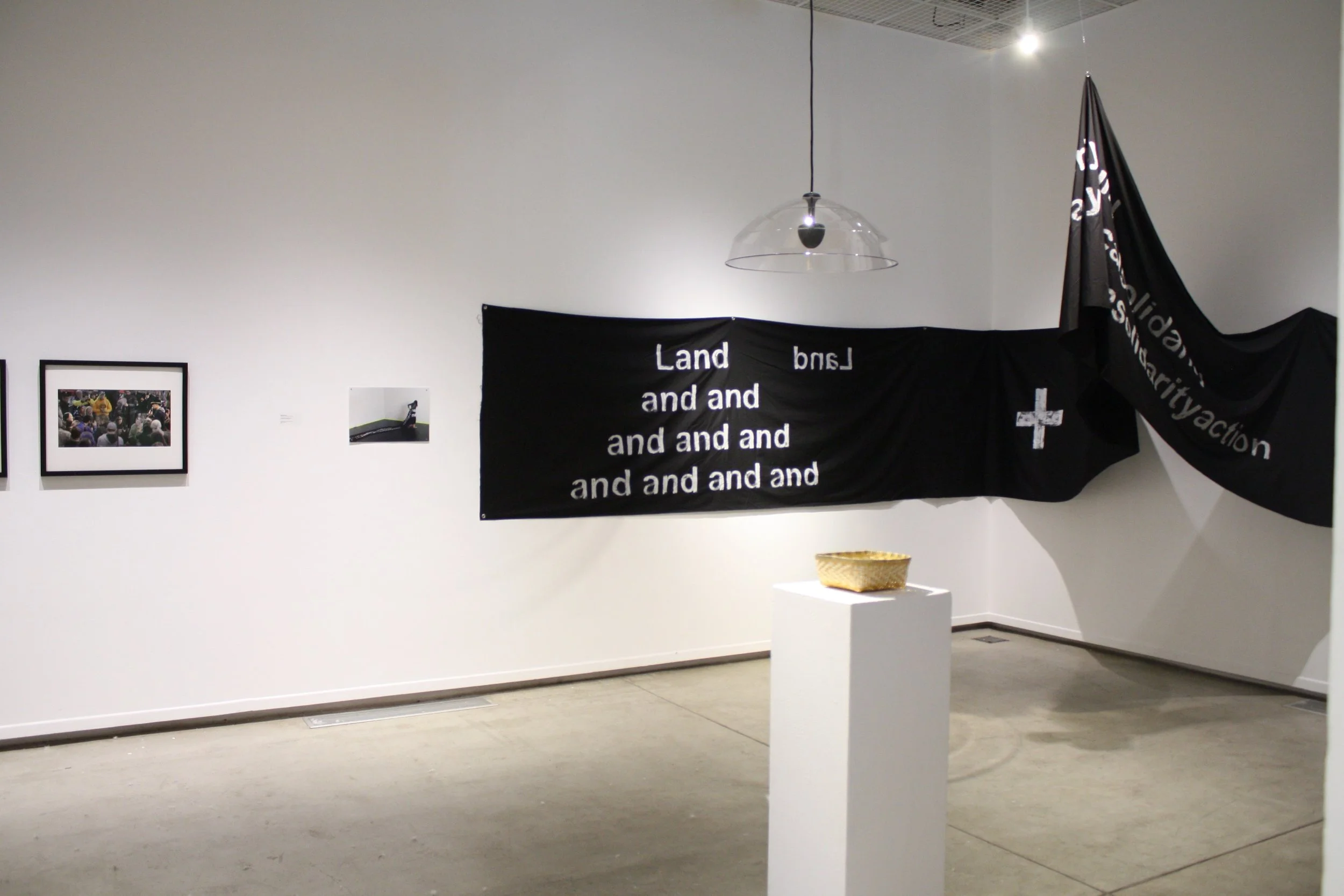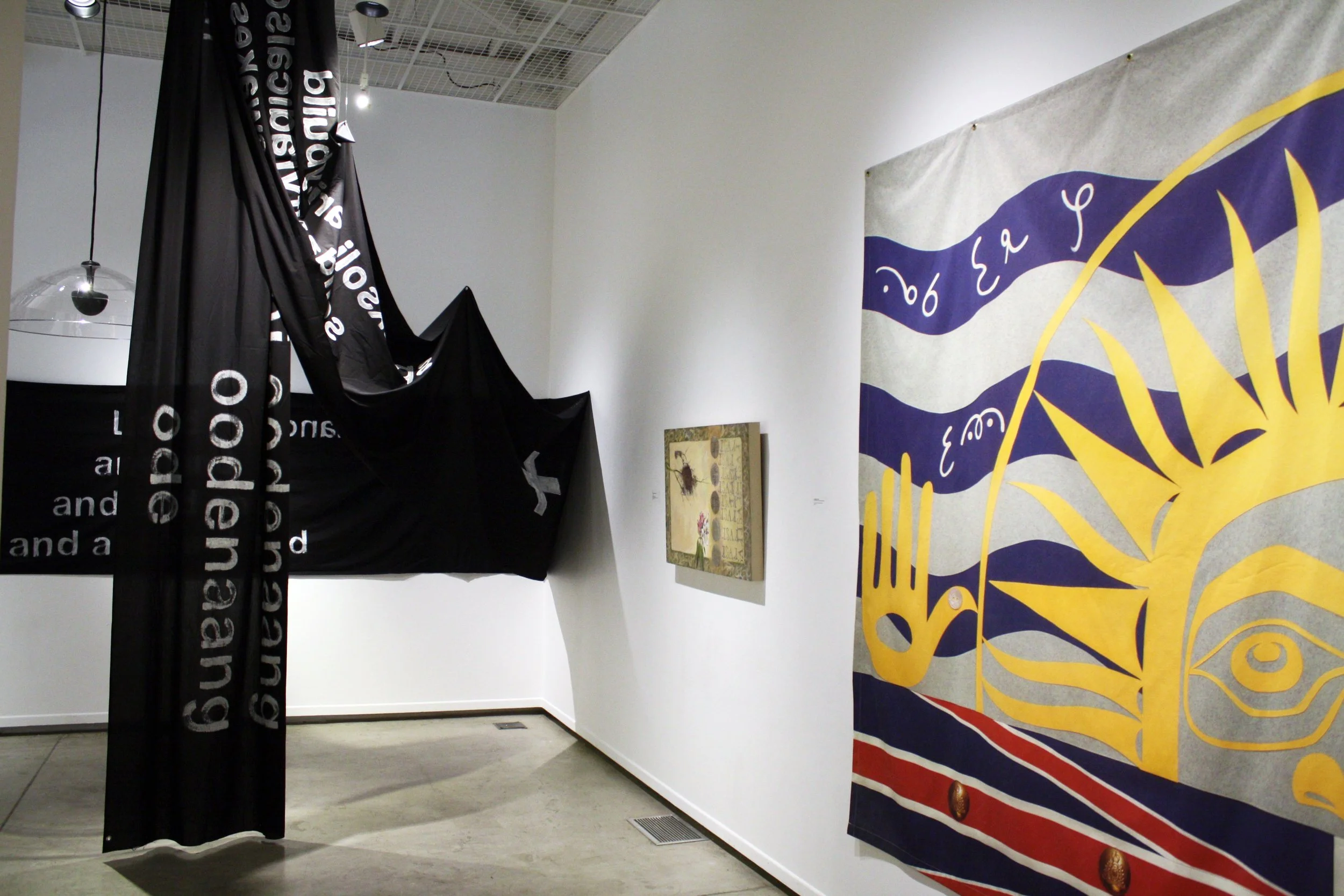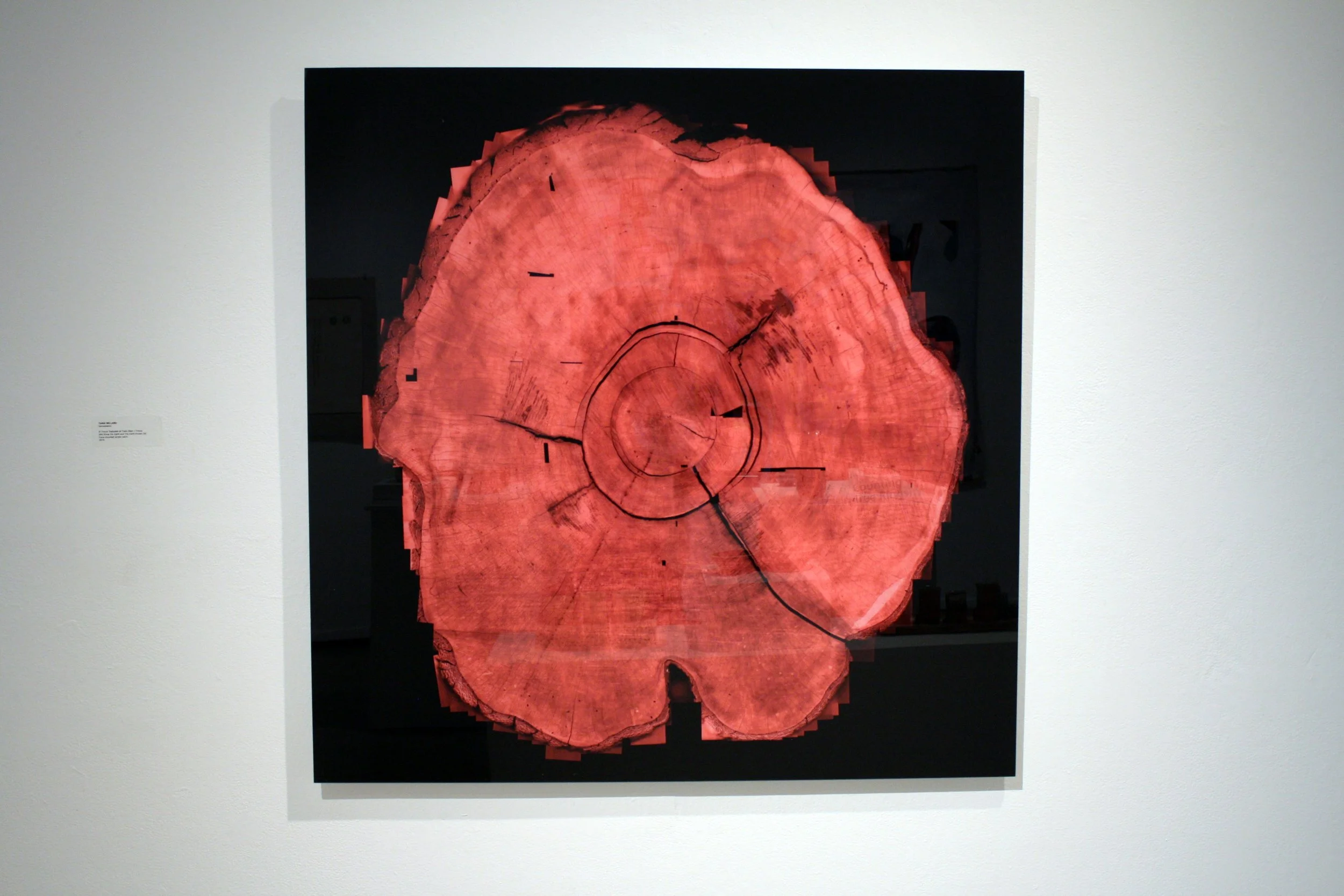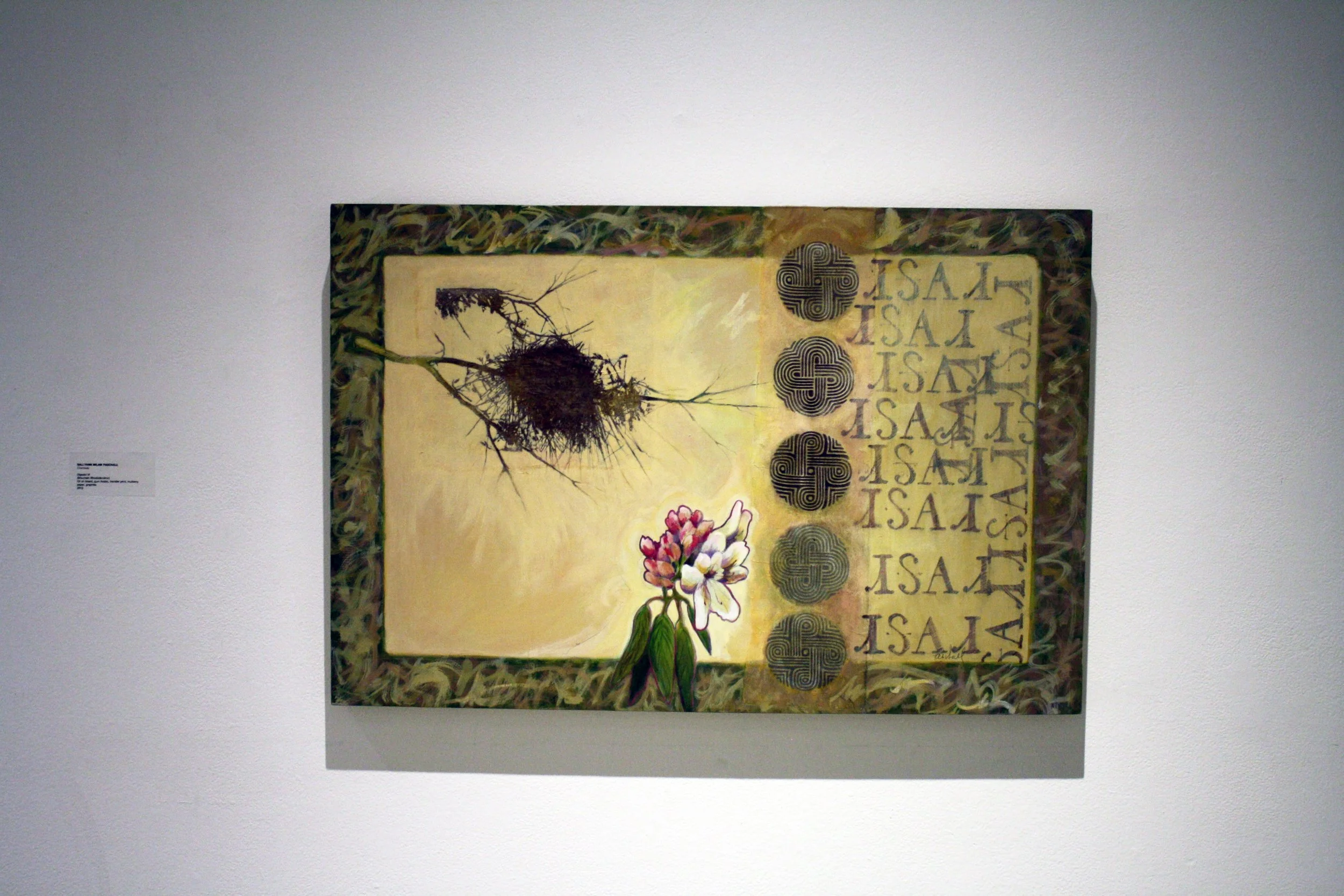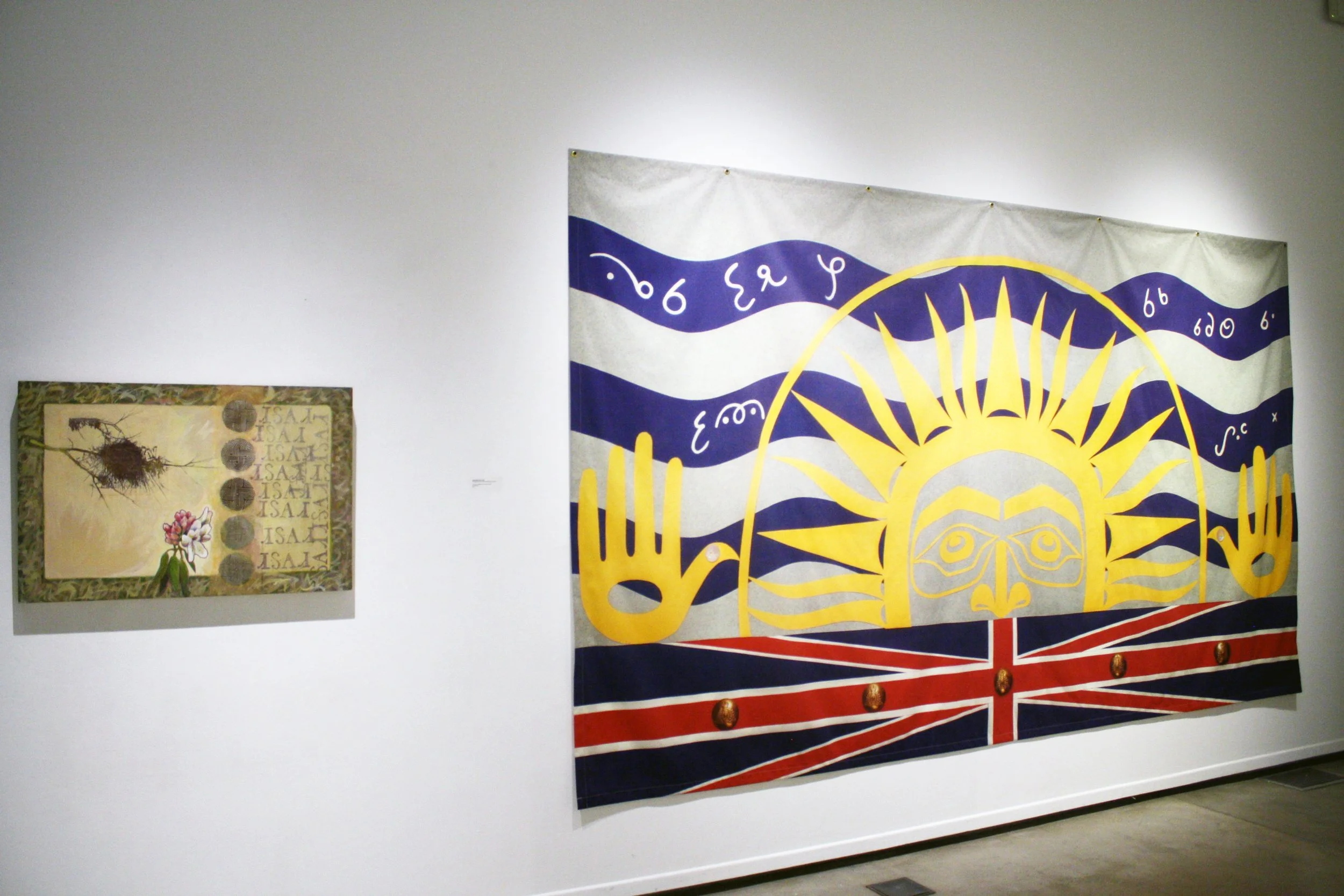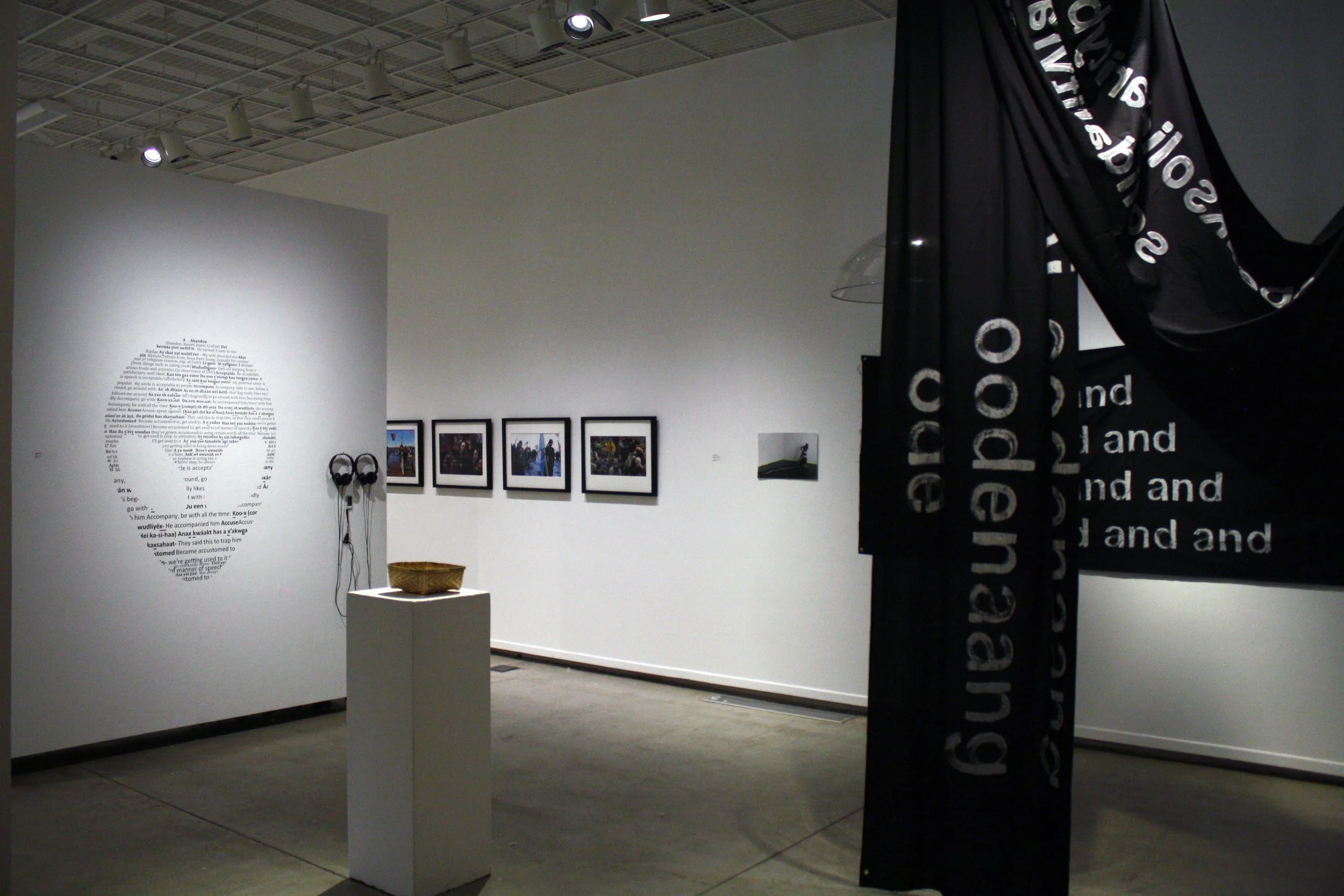MOTHER TONGUE: indigenous languages and art
Globally, Indigenous people are actively fighting for the survival of their languages through family, community, and university-based initiatives. Mother Tongue brings together Indigenous women artists from many different Nations across the US and Canada whose work critically engages with complexities inherent to the process of reclaiming and strengthening Indigenous languages.
Indigenous languages are endangered as a result of genocidal acts of colonialization in the past and the resultant biases that persist today. As Sallyann Paschall shares in her artist statement, even in the home efforts to teach Indigenous languages today are continually thwarted by prejudices that are a product of such biases, the legacy of intellectual colonization. Current English-only movements in the US, and the English and French movement in Canada, perpetuates the marginalization of the Indigenous languages that has gone on in both countries since the arrival of the first settlers. Marianne Nicolson critiques the settler erasure of Indigenous languages through her use of Chinook Jargon, a trade language introduced by Canadian settlers, in The Sun is Setting on the British Empire (2017).
The urgency of Indigenous language revitalization efforts cannot be overstated as a large number are predicted to become extinct in the next fifty years. Alison Marks’s Heaven and Earth (2017) grapples with the reality of language death in a way that searches for hope in other realms of existence. With the loss of Indigenous languages, so goes ancient land and waterway-based knowledge systems vital to understanding and restoring the health of our environment. Tania Willards’s We know the Earth, and the Earth Knows Us (2018) speaks to the connection between Indigenous language and the environment as well as to the powerful emotions brought on through language learning.
Not only are these languages foundational to Indigenous epistemologies and ontologies, but they are also directly connected to the physical, mental, emotional, and spiritual health of the people to which they belong. For Indigenous people, the healing experiences integral to the process of learning one’s language are simultaneously filled with moments of tremendous grief over the loss caused by horrific assimilation policies and corporal punishment aimed at its eradication. Recently, apologies for such heinous acts have been made by governments, religious leaders, others, similar to the apology documented in the work of Hulleah Tsinhnahjinne’s Veterans Standing at Standing Rock Series (2016). Lyn Risling’s Pa pi’êep ithívthaneen aachip kúma’araaras… (Long Ago Center of the World People…) (2017) highlights the critical role language plays in positioning Indigenous communities to land and their origin narratives.
Ultimately, Mother Tongue seeks to raise critical awareness about the need for Indigenous language preservation and for advocacy for policies that support Indigenous languages revitalization.
-Sm Łoodm ‘Nüüsm - Mique’l Dangeli, PhD and Jennifer C. Vigil, PhD, Guest Curators
-
Shan Goshorn (Cherokee)
Maria Hupfield(Wasauksing First Nation Anishinaabeg)
Alison Marks (Tlingit)
Marianne Nicolson (Dzawada’enuxw of the Kwakwaka’wakw peoples)
Shelley Niro (Mohawk)
Sallyann Milam Paschall(Cherokee Nation)
Lyn Risling (Karuk, Yurok & Hupa)
Hulleah J. Tsinhnahjinnie (Duskegee)




